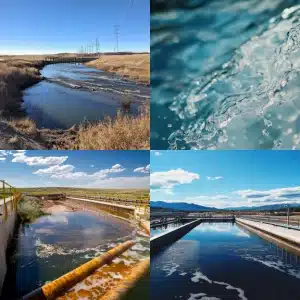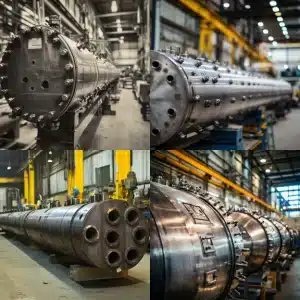
Material failure analysis is how engineers figure out why a component cracked, corroded, deformed, or otherwise stopped performing as intended. It combines visual review, testing, and data-driven reasoning to pinpoint root causes. Those findings guide better material selection, safer designs, and smarter maintenance planning. For pressure-retaining equipment, this process is a cornerstone of reliability and risk reduction.
Material failure analysis and why it matters
material failure analysis is the systematic investigation of why a material, part, or system did not meet its performance requirements. The first goal is to identify the true root cause, not just the visible symptom. The second goal is prevention, turning a failure into a feedback loop that strengthens design, fabrication, and operation for the next lifecycle.
When failures occur in pressure-retaining equipment, the stakes are higher. Tiny discontinuities can grow into leaks, unplanned shutdowns, or safety incidents if not caught early. That is why material failure analysis sits alongside Pressure Vessel Safety Standards and Compliance as a core practice for safe operation. Standards bodies define what “safe” looks like, while analysis tells you whether your equipment is actually behaving that way in real service.
What failures look like in real components
Most failures are not random. They follow recognizable patterns in the microstructure, surface condition, and loading history. Common modes include:
Brittle fracture
Sudden cracking with little warning, often triggered by low toughness, low temperature, or sharp stress raisers.Ductile overload
Noticeable plastic deformation before rupture, usually tied to loads beyond design basis.Fatigue cracking
Progressive crack growth under repeated loading, even when each cycle is below the material’s ultimate strength.Creep deformation
Slow strain accumulation under sustained stress at elevated temperature, eventually leading to bulging or rupture.Thermal stress damage
Cracking driven by rapid temperature changes or uneven heating and cooling.Corrosion-related loss
General wall thinning or localized attack such as pitting and stress-corrosion cracking.Erosion and wear
Material removal by flow or mechanical contact, accelerating thinning and roughness.Hydrogen embrittlement
Loss of ductility due to hydrogen uptake, creating delayed cracking risk.
These modes often interact. For example, pits formed by corrosion can become fatigue crack starters, especially in cyclic service. material failure analysis helps separate primary causes from secondary damage, so the fix targets what truly matters.
How standards connect to failure analysis
People often ask What are the safety standards for pressure vessels and how they relate to failure prevention. In practice, What is ASME code for pressure vessel safety is a framework for design, fabrication, inspection, and certification so vessels meet conservative safety margins. material failure analysis then verifies whether real-world service is consistent with those assumptions, especially after unexpected events or aging.
Equally important is How do pressure vessels comply with safety regulations over time. Compliance is not only a design checkbox. It also depends on inspection discipline, recordkeeping, repair quality, and operational controls. When a deficiency is found, material failure analysis guides what to repair, what to replace, and what to redesign.
The core workflow of material failure analysis
A strong material failure analysis follows a repeatable path. Skipping steps can lead to false conclusions or fixes that do not hold.
Define the failure and collect context
Gather service history, loading patterns, operating conditions, maintenance records, and any recent changes. If a pressure vessel is involved, this includes design data, fabrication notes, and inspection logs.Preserve evidence
Handle failed parts carefully to avoid contaminating fracture surfaces or removing corrosion products that tell the story.Conduct a detailed visual examination
Look for crack paths, deformation, discoloration, deposits, wear tracks, or heat tint. Even simple photos and dimensional checks can reveal directionality and timing.Select and perform targeted testing
Use the right tests to validate theories rather than testing everything at once.Synthesize findings into root cause and corrective actions
Root cause is usually a chain, not a single event. Actions should address each link that enables recurrence.
This approach is the same whether you are analyzing a small fitting or a full-scale vessel. The difference is the rigor of documentation and the breadth of standards you must align with.
Tools and techniques engineers rely on
Material failure analysis uses a mix of non-destructive and destructive methods. The strongest investigations use several techniques that agree with each other.
Microscopy
Optical microscopy and electron microscopy reveal microcracks, inclusions, grain boundary attack, and fracture morphology.Non-destructive testing
Ultrasonic, radiographic, magnetic particle, and dye penetrant testing locate discontinuities without cutting the component. This is central to Pressure Vessel Inspection and Maintenance because it lets teams find damage before it becomes a failure.Fractography
Fracture surface features show whether cracking was sudden, progressive, or environmentally assisted.Mechanical testing
Tensile, hardness, impact, and fatigue tests confirm whether the material met specification and how service altered its properties.Chemical and elemental analysis
Spectroscopy, X-ray diffraction, and other tools identify alloy chemistry, heat-affected zone changes, and corrosion products.
Used together, these methods help determine whether the material itself was deficient, the design introduced high stresses, fabrication created a defect, or operation pushed the system beyond intended limits.
Pressure vessel inspection expectations
To keep pressure-retaining equipment safe, routine inspection is not optional. A frequent question is How often do pressure vessels need to be inspected. The exact interval depends on service severity, degradation mechanisms, and applicable codes, but the principle is constant: inspection frequency must be driven by risk and evidence, not convenience.
Another common question is How to inspect a pressure vessel. At a high level, inspection programs typically include:
External visual checks for coating damage, leaks, distortion, or hot spots
Internal visual checks when access and safety permit
Thickness monitoring in corrosion-prone zones
Non-destructive testing focused on welds, nozzles, and known stress concentrators
Review of operating data for excursions and cycling
Evaluation of past repairs and alterations
If you are building or refining a program, it helps to understand What to include in a pressure vessel inspection checklist. Items usually cover isolation and depressurization, surface preparation, visual criteria, thickness grids, NDT scope, acceptance standards, and documentation.
material failure analysis plays a key role when inspection finds something unusual. It helps the team decide whether the finding is a harmless artifact, a fast-growing threat, or evidence of a deeper issue that needs engineering changes.
Preventing repeat failures
Prevention is where material failure analysis produces real value. Once a cause is confirmed, prevention tends to fall into a few buckets:
Material selection improvements
Choose alloys or treatments better suited to temperature, pressure, and environment.Design refinements
Reduce stress concentrations, improve drainage, add corrosion allowance, or adjust joint details.Fabrication and quality upgrades
Improve weld procedures, heat treatment control, and inspection gates.Operational guardrails
Limit cycling, control chemistry, maintain protective coatings, or address flow-induced erosion.Maintenance strategy tuning
Put inspection resources where evidence shows degradation is most likely.
RedRiver LLC brings these prevention principles into every stage of vessel lifecycle support. Our team designs with code intent in mind, fabricates with disciplined quality controls, and helps customers interpret inspection results so small issues do not become expensive surprises. Learn more about our approach at RedRiver LLC.
For deeper related reading, you might also explore RedRiver resources on failure learning and prevention, including Understanding Pressure Vessel Failures, Pressure Vessel Failure Criteria, and Non-Destructive Testing Methods.
Material failure analysis as a safety advantage
material failure analysis is more than a post-incident exercise. It is an ongoing reliability tool that connects real operating behavior to design assumptions and inspection planning. When paired with strong standards compliance and disciplined maintenance, material failure analysis helps pressure vessels stay safe, productive, and predictable across long service lives. If you treat every failure as a lesson, you end up with less downtime and more confidence in the equipment that supports your operation.
Call to action: Talk with RedRiver LLC about material failure analysis
If your operation depends on pressure-retaining equipment, it is worth having a partner who understands both codes and real-world degradation. RedRiver LLC supports customers with design insight, fabrication discipline, and practical guidance rooted in material failure analysis. Visit https://www.redriver.team/ to connect with our team and discuss how we can help you prevent repeat failures and extend asset life.
FAQs
1. What is material failure analysis used for?
material failure analysis is used to determine why a component cracked, deformed, corroded, or otherwise failed. It helps teams improve design, choose better materials, and avoid recurrence.
2. What methods are used in material failure analysis?
Common methods include visual examination, microscopy, non-destructive testing, fractography, mechanical testing, and chemical or elemental analysis.
3. What are the safety standards for pressure vessels?
Pressure vessels are governed by formal design and inspection codes such as the ASME Boiler and Pressure Vessel Code, which sets rules for construction, examination, and certification.
4. How do pressure vessels comply with safety regulations?
Compliance comes from following code requirements during design and fabrication, then maintaining safe operation through inspections, documented repairs, and controlled service conditions.
5. How often do pressure vessels need to be inspected?
Inspection intervals depend on service type, risk level, degradation mechanisms, and code guidance. Higher-risk service typically requires more frequent checks.
6. How to inspect a pressure vessel?
Inspection usually combines external and internal visual checks, thickness monitoring, and targeted non-destructive testing focused on critical welds and high-stress areas.
7. What to include in a pressure vessel inspection checklist?
A checklist should cover safety isolation steps, visual criteria, thickness locations, NDT scope, acceptance standards, and clear documentation requirements. Fluix
What is ASME code for pressure vessel safety?
The ASME BPVC, especially Section VIII, provides rules for pressure vessel design, fabrication, inspection, and testing to ensure safe construction and operation. files.asme.org+2engineersnotebook.com+2
Key Takeaways
material failure analysis identifies root causes of cracking, corrosion, deformation, and loss of containment.
Pairing analysis with Pressure Vessel Safety Standards and Compliance strengthens safety decisions across the vessel lifecycle.
Pressure Vessel Inspection and Maintenance programs should be evidence-based and risk-informed.
Clear inspection scope and a complete pressure vessel inspection checklist help detect problems early.
RedRiver LLC applies material failure analysis insights to design, fabrication, and support so failures do not repeat.
Related Blog Post
No subpillar set for this blog post.




